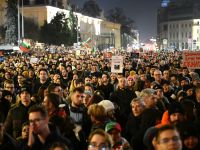What began as demonstrations among poor Syrian farmers calling for land and related policy reforms during the region’s Arab Spring era has now transformed into an all-out war.
Now entering its third year of bloodshed, violence, and turmoil, the conflict's destruction has been limitless: crumbling buildings and cities to families and communities, affecting the very roots of Syria's political, economic and cultural foundations.
No one and nothing have been spared: As a heartland of ancient societies, including six designated world heritage sites, the war is slowly bombing-and “digging away” the country's historical heritage.
In Damascus, ancient minarets, the Umayyad mosque, the city’s citadel and one of the world's oldest souks have been damaged or destroyed. In Aleppo, the Archaeological Museum, the Aleppo citadel, neighborhoods of the old city, the Ottoman mosque of al Kamaliya ( XVIII c.) , the Ottoman Mosque Adiliyah ( XVI cent.) , The Mamluk mosque Qastel Harami (XV cent.) , and the Mamluk mosque of Al Mehmendar ( XIV c.), have all been bombed. Even the old city gate, Bab An Naser was damaged in fighting between rebel and regime forces over the past three years.
In June 2013, UNESCO focused its annual conference in Phnon Penh on the destruction of Syria's historical and heritage sites, ending its meeting with an appeal to protect the country's six main sites.
In Syria, Direct Prof. Abdelkarim from the National Directorate of Antiquities and Museums in Syria (DGAM) moved some of the country’s most precious artifacts from the National Museum of Damascus into vaults. While both actions have been welcomed and supported by the international community along with Syrian citizens, the deteriorating situation on the ground is starting to render such safeguarding and calls to protect toothless.
Clashes between regime and rebel forces is perhaps the most obvious cause for such destruction, but only focusing on the fight itself is a dangerous precedent. Regime and rebel factions have strategically used the annihilation and destruction of some of the country's most precious archaeological and historic landmarks as strategic political weapons in their battle for power and control of Syria's future.
Destroying Syria's cultural landmarks have been used tactically by both sides to decrease the country's internal cohesion and
identity, undermine the opponent's power, and "rewrite the history" of Syria for the future by removing all reminders of the past, according to Alberto Savioli, an Italian archaeologist, researcher, and filmmaker who has been actively researching the issue.
Regime airstrikes throughout the country, for example, have caused unimaginable damage to key historical sites such as the Qalat Rahba Fortress (Deir ez Zor) on the Euphrates river, as well as the mosaics adorning Damascus’ Ummayed Mosque and the walls of its Citadel.
Such destruction, Savioli further emphasized that such destruction is an economic tactic as well. For example, an unidentified armed group vandalized a warehouse containing materials from Heraqla archaeological site near the rebel-held town of Raqaa. The armed men posed as security staff that was responsible for moving the museum's warehouse materials to "safer locations," giving them the necessary cover and clearance to steal and remove the materials accordingly. Hundreds of mosaics and ceramic pieces from the site were stolen, and according to Savioli's Syrian sources, only three boxes have been found or returned since the robbery.
A number of ceramic objects were also stolen from a room in the Qalat Jaabar fortress located on the Euphrates river west of Raqqa, and illicit excavations have further been conducted in Apamea, Jebel Al Alaa (Jebel Zawia), and The Diocletian in Palmira.
Many of the sites are not well preserved and left in shambles with illicit excavators often digging and searching until they find the item they are looking for and then abandoning the site without properly closing it when it becomes (quenched) of its lucrative use. Damage is even visible from satellite pictures in some cases.
In an interview with the Washington Post, one rebel informant said, "Some days we are soldiers, and some days we are 'archaelogists.'" The illicit excavations have been well documented over the past three years with no sole group acting as "archaeologists" more than another, however: from rebel and regime fighters to armed gangs and ordinary citizens needing to make a bit of money to remedy their difficult economic--and living--situations.
So where do these precious materials and objects go, and with whom? According to Interpol statistics and data, many of Syria's historical treasures have been transported to Lebanon and Turkey. With Syria in chaos and illicit excavations becoming rampant, private art collectors have eagerly set their sights on the precious artifacts coming from the war-torn country.
The world however, should not be shocked by such vandalism and profiteering: it has become a systematic process, with illicit excavations and art dealings becoming notorious aspects of many conflicts past and present in the region.
Iraq, in recent years for example, has been a victim to such vandalism and cultural destruction, with many of its historic treasures stolen and sold in the international market. Like Syria, such stolen goods were at first marked as "illegal" under Interpol designations, but after a few years, the stolen objects are "cleaned" of their illicit status as they exchange hands between various private collections until they become documented as "legal" objects for auction and sale.
It is likely that that Syria’s "illegal" stolen artifacts and art under Interpol data will thus transform into a “legal” status after a few years, says Savioli, despite Interpol’s special website link that marks the missing items as stolen to encourage auction houses and private collectors to avoid making illicit purchases of such objects accordingly.
This cynicism, along with many other researchers studying the protection of Syria’s heritage sites and cultural landmarks, is based on the limited application of international standards and protocol to the issue since most of Syria’s ancients treasures and excavation sites are under rebel control as chaos continues to envelop the entire nation more generally. Moreover, private collectors and the “art mafia” industry abroad is very “hush hush” about such illicit dealings, seeing their own profits in years ahead projected to rise with their new stolen pieces.
Finding a solution to this devastating phenomenon is therefore extremely difficult. Archaeologists argues that in addition to point the finger at what is happening at ground level in terms of who is stealing and why, and rather focus our efforts on how international regulations can be applied in war contexts or in the Middle East more generally to stem this already systemized practice. For example, it may be necessary to reconsider policies and regulations associated with objects, arts or related materials that originate from the Middle East, and further tighten control in auction and private collection practices more generally.
It may, however, be too late for Syria: the rampant destruction of the country’s historical and heritage sites are so dramatic that they may no longer be salvageable. Yet, by setting new standards, regulations and guidelines to protect the Middle East’s—and the world’s—cultural histories may serve as a mechanism to ensure that future generations have the privilege to learn their histories from various perspectives and eras despite any conflicts, wars, and power changes that may occur in upcoming years.
By Maurizio Porcu & Patricia Ward








